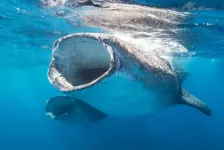(Press-News.org) Even the most optimistic projections for the rapid build-out of solar, wind, and other low-carbon resources acknowledge that coal, natural gas, and other fossil fuels will dominate the world’s energy mix for decades to come. If the vast greenhouse gas emissions from burning these fossil fuels continue to enter the planet’s atmosphere, global warming will not be limited to sustainable levels. The capture and geologic sequestration of carbon emissions (CCS) offer a promising solution to the world’s carbon conundrum.
Even with growing technological maturity and generous public policy support, however, the necessary CCS rush is lagging due to inefficient and oft-stifling liability regimes in the United States and elsewhere. A recent Nature Sustainability comment by Felix Mormann, a professor at Texas A&M University School of Law, reveals critical shortcomings in CCS liability management and proposes a multi-tiered framework, modeled after nuclear power plant liability, to reconcile the global interest in CCS deployment with developers’ limited risk-bearing capacity and the need for adequate compensation in the event of an accident.
Jurisdictions with dedicated liability regimes for sequestered carbon generally fall into one of two camps. The first camp holds developers liable for carbon stored underground over extended timeframes, such as the 50-year liability imposed by U.S. federal law, which doubles to 100 years for projects tapping into the lucrative incentives offered under California law. The second camp, including Australia, the Canadian province of Alberta as well as certain E.U. members and U.S. states among other jurisdictions, allows CCS operators to transfer liability for their sequestration sites shortly after carbon injections end.
"Neither of these approaches is likely to deliver the CCS projects we need to put a serious dent in the world’s carbon emissions," Mormann said. "Strict long-term liability can have a stifling effect on deployment. The ‘get-out-of-jail-free-card’ of liability transfer, meanwhile, diminishes a developer’s incentives to apply the requisite care in the selection, development, and operation of their carbon sequestration site."
Thinking through the challenges of managing CCS liability, Mormann was reminded of another sustainable energy technology – nuclear power – that struggled to enter the mainstream some seventy years ago.
"The parallels between CCS and nuclear power are far from obvious at first glance. After all, nuclear produces a desirable commodity in the form of electricity, while CCS removes an unwanted by-product of generating that same commodity using fossil fuels," emphasizes Mormann. "But the more I studied it, the more I realized that CCS projects today engender many of the same competing interests that nuclear power evoked back in the 1950s: strong societal interest in more sustainable energy technology, private industry’s fear of possibly crushing liability, and the public’s need for protection against unlikely but potentially devastating accidents."
Based on this nuclear-CCS analogy, Mormann’s comment proposes a multi-tiered framework for managing CCS liability modeled after the 1957 Price-Anderson Act that jumpstarted the U.S. nuclear power industry. The proposed framework would hold individual sequestration sites liable up to the maximum of commercially available liability insurance. For damages beyond these limits, all sequestration sites in the jurisdiction would pitch in via a form of pooled industry self-insurance, again up to a specified limit.
“If the nuclear experience is any indication,” explains Mormann, “this secondary layer of industry-shared liability is likely to encourage knowledge sharing and communitarian self-regulation among CCS operators that further reduces the risk of accidents.” Only once these first two layers have been exhausted, would government step in to provide additional funds, in recognition of the societal interest in the safe and timely deployment of this crucial decarbonization technology.
END
The case for sharing carbon storage risk
2024-05-15
ELSE PRESS RELEASES FROM THIS DATE:
Genetics provide key to fight crown-of-thorns starfish
2024-05-15
Scientists are one step closer to combatting coral-destroying crown-of-thorns starfish, following a University of Queensland study into the pest’s genetics.
In a world first study, University of Queensland PhD candidates Marie Morin and Mathias Jönsson analysed the genetics of the toxic coral-eating invertebrates found on the Great Barrier Reef.
“By understanding how crown-of-thorns (COTS) starfish genes work, we can unlock the mechanisms behind their key behaviours and find ways to stop them breeding,” Ms Morin said.
“In this study we looked at ...
Tiger beetles fight off bat attacks with ultrasonic mimicry
2024-05-15
Bats, as the main predator of night-flying insects, create a selective pressure that has led many of their prey to evolve an early warning system of sorts: ears uniquely tuned to high-frequency bat echolocation. To date, scientists have found at least six orders of insects – including moths, beetles, crickets and grasshoppers – that have evolved ears capable of detecting ultrasound.
But tiger beetles take things a step further. When they hear a bat nearby, they respond with their own ultrasonic signal, and for the past 30 years, no one has known why.
“It’s ...
Focus on diagnosing dyslexia is failing struggling readers, experts warn
2024-05-15
UNDER STRICT EMBARGO UNTIL 19:01 EDT TUESDAY 14 MAY 2024
An undue focus on diagnosing dyslexia is leaving many children without the help they urgently need, according to two leading educational and clinical psychologists.
The experts are calling for educators, psychologists and policy makers to rethink approaches to assessment and support for children who are struggling to learn to read.
In a new book, Professors Julian Elliott (Durham University, UK) and Elena Grigorenko (University of Houston, USA) argue that the clinical diagnosis of dyslexia is not only scientifically questionable, but current procedures are failing to serve the needs of many struggling readers, particularly ...
Most dangerous areas for whale shark-shipping vessel collisions revealed
2024-05-15
Researchers have found that heavily used shipping lanes pass through crucial whale shark feeding grounds, posing a threat to this endangered species.
Research published today (Wednesday 15 May) in Science of the Total Environment has revealed areas where the sharks are at the highest risk of colliding with large shipping vessels by mapping the locations of whale shark aggregations and overlaying them with information on shipping traffic.
“The almost ubiquitous overlap of at least some large shipping vessel traffic with whale shark aggregations underlines the magnitude of the threat the shipping industry ...
Petroleum, chlorine mix could yield harmful byproducts in new UH study
2024-05-15
A new study from the University of Hawaiʻi at Mānoa shows that chlorine mixed with petroleum in water can potentially produce inadvertent byproducts harmful to human health.
Small amounts of chlorine, within safe industry standards, are added to disinfect Oʻahu’s drinking water by the Honolulu Board of Water Supply (BWS) and military installations, according to BWS. In late November 2021, a petroleum release from the Red Hill Bulk Fuel Storage Facility contaminated the Red Hill ...
Novel inhibitor insights offer pathway to preventing PXR-associated drug resistance
2024-05-15
(Memphis, Tenn. – May 14, 2024) Deaths from cancer or infections can occur when available treatments are ineffective. Once turned on, pregnane X receptor (PXR) activates the expression of genes encoding enzymes that metabolize external chemicals, including drugs. This causes a significant drop in the effectiveness of chemotherapy, antivirals and other pharmaceuticals. Blocking the PXR activity is notoriously difficult, as many drugs that bind the protein, whether intentionally or unintentionally, activate it. Scientists at St. Jude Children’s Research ...
Higher income reduces stroke mortality risk by a third, new study shows
2024-05-15
(Wednesday, 15 May 2024, Basel, Switzerland) New research, presented today at the 10th European Stroke Organisation Conference (ESOC) 2024, has revealed that high-income individuals have a 32% lower risk of post-stroke mortality.1 Additionally, those with a higher education have a 26% lower risk of death post-stroke, highlighting striking disparities in stroke survival based on key social determinants of health (SDoH).
The register-based study analysed data from 6,901 stroke patients in Gothenburg, Sweden between November 2014 to December 2019 to examine ...
Text messages with financial incentives for men with obesity
2024-05-15
About The Study: Among men with obesity, an intervention with text messaging with financial incentive significantly improved weight loss compared with a control group, whereas text messaging alone was not significantly better than the control condition. These findings support text messaging combined with financial incentives to attain weight loss in men with obesity.
Quote from corresponding author Prof. Pat Hoddinott, M.B., B.S., Ph.D.:
“Losing weight can make people feel better, reduce their risk of many health problems such as diabetes, and helps the health service with their aim to keep ...
An adaptive behavioral intervention for weight loss management
2024-05-15
About The Study: A wireless feedback system (Wi-Fi activity tracker and scale with smartphone app to provide daily feedback) was not noninferior to the same system with added coaching. Continued efforts are needed to identify strategies for weight loss management and to accurately select interventions for different individuals to achieve weight loss goals.
Quote from corresponding author Bonnie Spring, Ph.D.:
“With U.S. obesity prevalence projected to reach 49% by 2030, limited obesity treatment resources need to be spread across more of the ...
Tech can’t replace human coaches in obesity treatment
2024-05-15
· The need for low cost but effective obesity treatments has become urgent
· ‘At this stage, treatment still needs a human because the tech alone doesn’t produce clinically acceptable weight loss for most people’
· Not previously known whether tech alone could produce clinically acceptable weight loss
CHICAGO --- A new Northwestern Medicine study shows that technology alone can’t replace the human touch to produce meaningful weight loss in obesity treatment.
“Giving people technology alone ...



